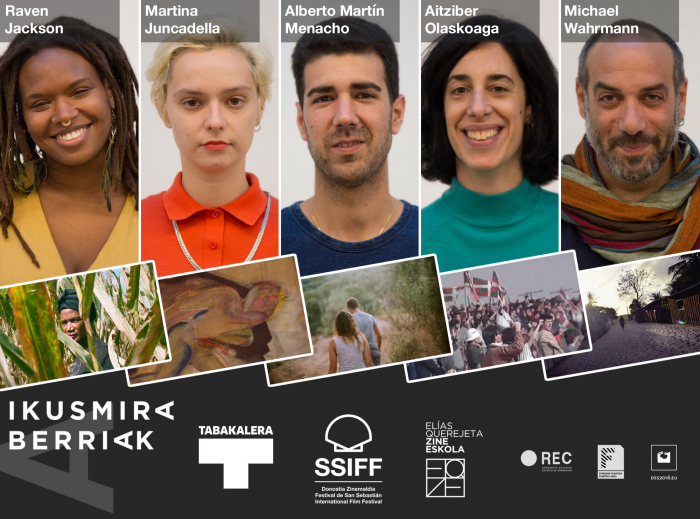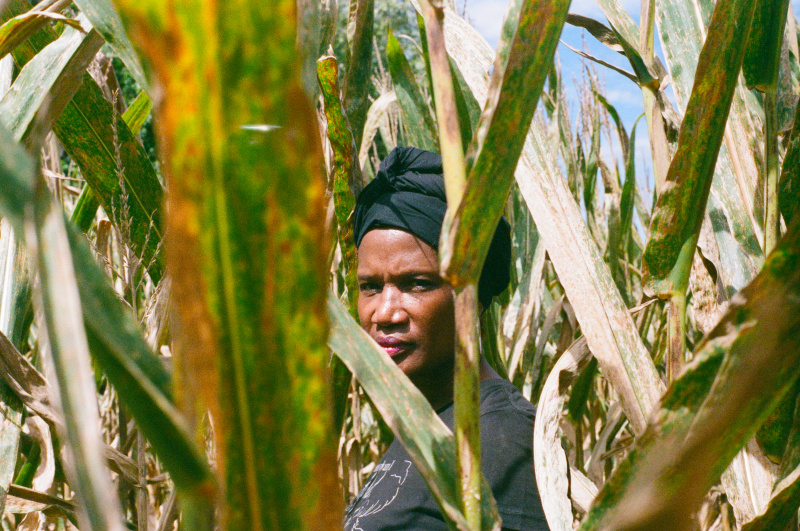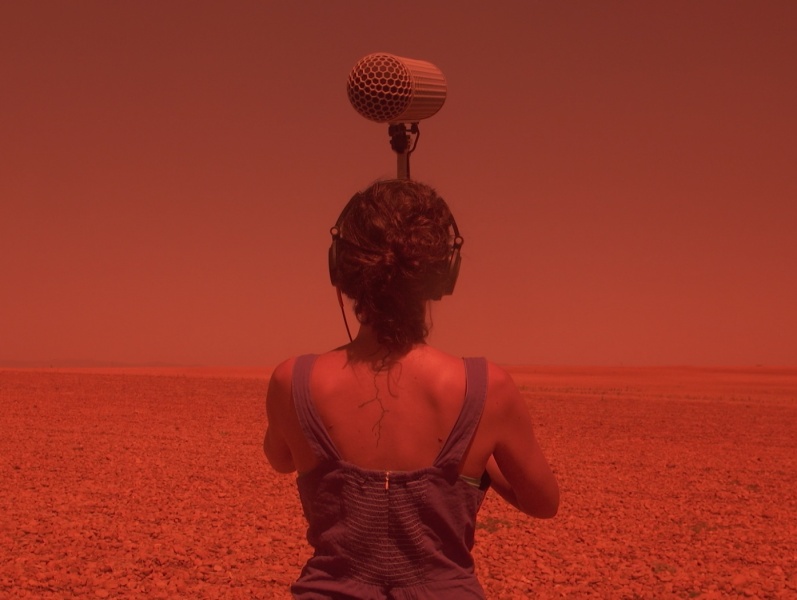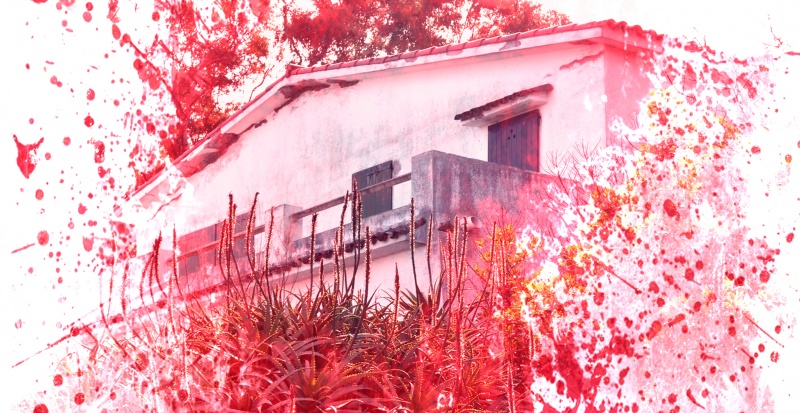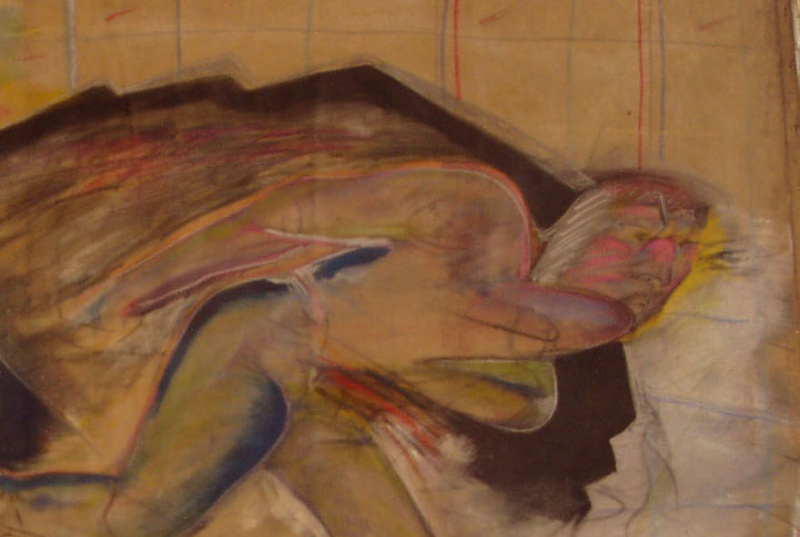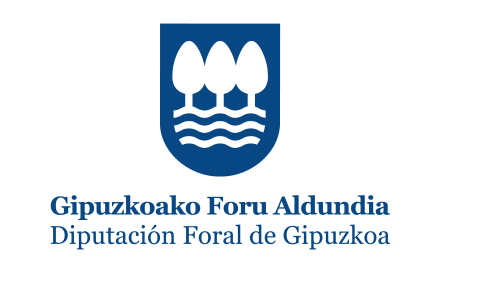The fifth edition of Ikusmira Berriak kicked off on February 11th and its first phase comes to an end this Sunday. Over the course of these four weeks, Raven Jackson, Martina Juncadella, Alberto Martín Menacho, Aitziber Olaskoaga and Michael Wahrmann—the five film makers selected from among 174 entrants—have developed their projects in Tabakalera’s Artist’s Space.
The Ikusmira Berriak programme seeks to involve new talent as well as producers and representatives from the audiovisual industry who support innovation and new languages. It is organised by Tabakalera, the San Sebastian Film Festival and Elías Querejeta Film School in collaboration with REC Recording Studio and the Basque Film Archive, and is part of the legacy of San Sebastian 2016 European Capital of Culture.
This fifth edition is the first one under the new Ikusmira Berriak structure. By dividing the residency into two phases in February and September, the film makers can get the most out of the experience and have time to fully develop their project before unveiling it to possible producers, investors and distributors during the San Sebastian Film Festival.
Supporting them throughout this process is the German film maker Valeska Grisebach, who has travelled to San Sebastian to take part in the programme for the first time, as well as the Brazilian director Sergio Oksman. Together with Savina Neirotti, the manager of TorinoFilmLab and Scuola Holden in Turin, they comprise the Expert Committee.
New for this year is the crossing over of the programmes run by Elías Querejeta Film School and Ikusmira Berriak during the first week of the residency. The residents attended individual project tutorials with EQFS tutors Oliver Laxe and Salomé Lamas and have had access to the school’s programme, with the option of taking part in activities together EQFS students.
Once again, the filmmakers Tizza Covi and Rainer Frimmel—founders of Vento Films—have shared their cinematic knowledge and experience with the residents.
The film makers will continue working on their projects from March through to September and will receive online tutoring from the experts. They will return to San Sebastian in September to complete the final two weeks of their residency with their project more fully developed and ready to be shared with the film industry. During this last phase, residents will have the chance to attend a workshop on market conditions and will be prepped for their pitching session with a view to securing meetings with the industry professionals attending the Festival.
Three projects selected from previous editions of Ikusmira Berriak have been completed and screened at the Festival: the short films El extraño by Pablo Álvarez, Calipatria by Leo Calice and Gerhard Treml, and Gwendolyn Green by Tamyka Smith were presented at Zabaltegi-Tabakalera in 2016 and 2017. Two feature films by residents from the first edition of Ikusmira Berriak were premiered last year: Trote, by Xacio Baño, was unveiled at Locarno and subsequently at Zabaltegi-Tabakalera, and Muga deitzen da pausoa, by Maider Oleaga, had its premiere in Gijón. In addition, last year's resident Manuel Abramovich has just won the Silver Bear Jury Prize in the international short film category at Berlinale for Blue Boy.
We asked the five filmmakers why they entered their projects into the Ikusmira Berriak programme and what their expectations are for the residency.


Why did you decide to apply with this project for Ikusmira Berriak?
I applied to the Ikusmira Berriak residency because it's a place of risk and innovation. After coming to the festival last year with a short in the NEST section, and being introduced to Tabakalera, I knew the space would be a wonderful environment for me to further develop my first feature.
It is the first time the programme is divided into two stays: one in February and one in September. What do you think about the current structure?
The current structure of the program works well as it allows the project room to breathe and grow between stays. I look forward to presenting my film again in September and I'm excited to make strides with the film in the interim.
What are your expectations?
My expectations are to leave the residency more firmly rooted in my feature. And, hopefully, complete a strong rough draft of the script. Likewise, as the second part of the residency involves a pitch to the industry, I'm continuing the work of building concise language to talk about the project in engaging and clear ways. Above all, though, this residency has been tremendously helpful in showing me how I work when developing a feature. What environments feed me creatively. The alone time I need. As this is my first feature, it's been invaluable to simply see what works for me and what doesn't.
In lyrical, non-linear portraits evoking the texture of memories, All Dirt Roads Taste of Salt viscerally and experientially explores the life of a black woman in the South of the United States - from youth to her older years.


Why did you enter your project into Ikusmira Berriak?
Because it's a luxury to be able to spend one intensive month on writing a film. We call this luxury time, and for me it's the first time that it's been available under these conditions. Also, because bringing myself and my film into contact with other perspectives can only help me to develop and learn. That's all I want now.
This is the first time that the residency has been split into two phases: one in February and the other in September. What do you think about this structure?
I can't compare it with previous editions because I haven't experienced the other model. But, I think it's a good idea. Personally, I like to let time go by when I'm writing, to let the work sit and go back to it a few days or months later. Between March and September the film will continue its journey, and it will grow. In my case, the film will continue being written through to the editing stage, so why not enjoy the journey.
What are your expectations for the residency?
Basically, to enjoy the experience and to write, read and reflect. If, by March 10th, I have a narrative structure that I'm comfortable with, all the better. If not, at least I'll have dedicated time solely to this; to knowing my work and its constituent parts better.
Hunting takes place in the countryside of southern Extremadura (Spain) during the cold winter months. Ana (20) and Juan Luis (25) are a young couple in charge of leading the dogs in this ritual event. For some time, Ana has been thinking about leaving her town for the capital. The two must negotiate the terms of their relationship and whether or not they want to stay together. Martín (11), Ana’s younger brother, is growing up in a rural environment alongside the violence of nature. A rupture in the present may evoke the memory of a fracture between an old world on its way out and an emerging modern one. Antier noche is the portrait of this youth.


Why did you enter your project into Ikusmira Berriak?
Ikusmira Berriak is an incredible opportunity to promote the project you're working on. What's more, the involvement of Tabakalera, the San Sebastian International Film Festival and the Film School brings substantial human and financial resources and infrastructure to the residency which enable you to develop your project in depth. Given my project is intrinsically linked to the Basque context, I decided to try my luck and enter the call for projects.
This is the first time that the residency has been split into two phases: one in February and the other in September. What do you think about this structure?
The change seems right to me. Audiovisual projects need a lot of time from conception through to completion. It's wise to have six months between the first and second parts of the residency. The second phase of Ikusmira Berriak focuses on pitching the film throughout the film festival. The months of work prior to this are decisive in being able to return with a more mature project, and one which is hopefully further ahead in its (pre-)production. According to what various residency managers have told us, in previous years the final pitching session was a great worry for the residents right from the outset. I'm really happy that they've managed to rethink the structure.
What are your expectations for the residency?
On one hand, making the most of the time and work space provided by Ikusmira Berriak to fully immerse myself in the film and develop it as much as possible. On the other, being able to share and discuss my project with my colleagues and with film professionals who can help me to rethink and enrich it as I take it forward. It's a real privilege to be here.
In 1990, Negu Gorriak played their first concert outside Herrera de la Mancha prison and later sold a VHS recording of the event. The tape became a symbol for followers of the Abertzale nationalist left wing. Jo ta ke is a video essay which uses images from the video and the director’s own memories as its starting point. It opens up reflections on the construction of national identity and the links between fatherland, father and patriotism. The project relates the author's political awakening in the politicised and polarised context of the Basque Country.


Why did you enter your project into Ikusmira Berriak?
The IB programme allows you to work on various aspects of your project at the same time. First, the work space in Tabakalera and the dedicated time with the support of experts gives us a creative opportunity to delve deeper into our work and move our projects forward. Second, the chance to take part in the San Sebastian International Film Festival and to present our projects to the industry enables us to take our work out of our comfort zone and focus on its production and distribution. In some ways, these two aspects are really important for developing and growing our projects.
This is the first time that the residency has been split into two phases: one in February and the other in September. What do you think about this structure?
The separation seems like a good idea to me. Firstly, because it creates space between initial project development and presenting the project at a more advanced stage. The months between the first and second phases enable us to develop and work on our projects so that, come September, they're clearer and more coherent. Secondly, this first phase can be dedicated solely to creation, without the underlying stress of an important and imminent pitching session which often drains your energy.
What are your expectations for the residency?
On one hand, time and silence to concentrate and work on the project exclusively, without worrying about anything around me. On the other, the chance for a profound exchange, whether with the other residents, with the experts or tutors or with students from the film school, and in general the Tabakalera space and its inhabitants.
A retired French couple buys an abandoned house on a paradisiac island in northeastern Brazil. The island is more isolated than they had imagined. Arriving on their property, they are surprised to find a small fishing village inhabited by the descendants of an old German colony; strange scars on the villager’s bodies hide a secret kept for decades. This social horror thriller leads us into a class struggle over land and borders, raising questions about limits and different kinds of pain.


Why did you enter your project into Ikusmira Berriak?
I learned about Ikusmira Berriak while taking part in Nest, the film student section of the San Sebastian Film Festival. When I started to develop my feature film, I felt that this residency would bring together opportunities for exchanges between colleagues and tutors while providing space and resources for developing the project.
This is the first time that the residency has been split into two phases: one in February and the other in September. What do you think about this structure?
I think it's great because it means that in the first phase we can concentrate on our creative potential, and in the second we can immerse ourselves in the industry part.
What are your expectations for the residency?
These few weeks will be for thinking, writing and investigating the project further. It's a great boost for the months ahead.
A writer in the depths of grief following his mother's death moves to an iconic hotel in central Buenos Aires. While tackling his next novel, he wanders the city with a roll of paintings he's unable to open. A series of chance and enlightening encounters with strangers complicate his life. One long night, he finally manages to unfurl the works his mother left behind. From now on, he won't be only himself: he’ll be Pablo, a lawless yet gentle beast, and Ursula, a bitter and melancholic woman. Three identities, three lives, all forged around a single experience.

